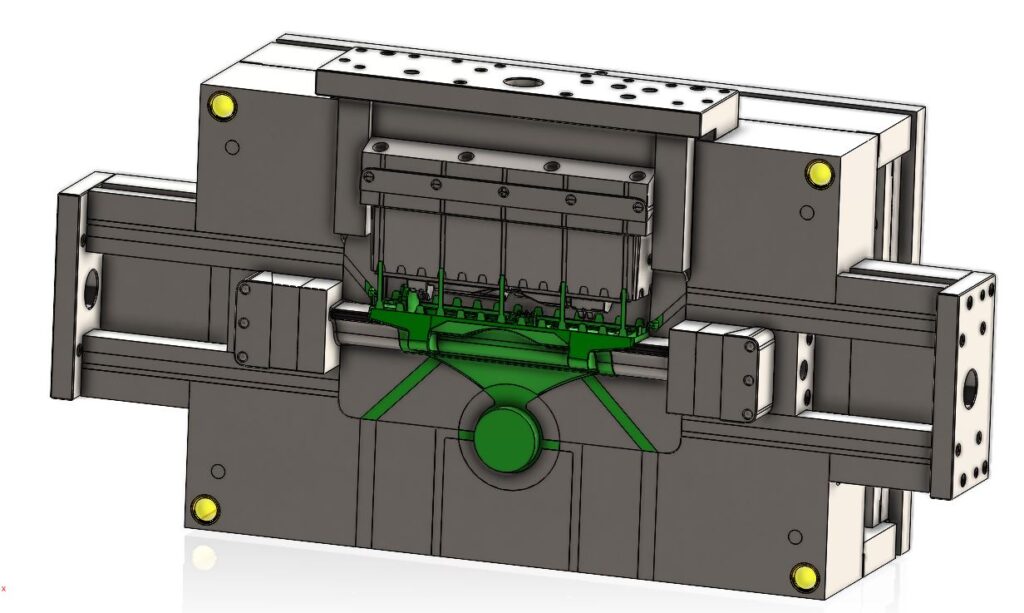Vforge uses dies that appear from a distance to be very similar to typical high pressure diecasting dies. Materials of construction like H-13 tool steel are similar as are construction techniques. However, our gates and runners are substantially different than high pressure diecast norms and closer to premium casting processes such as permanent mold. Large gates and runners enable a primary advantage of the Vforge thixocasting process to inject high viscosity, semi-solid material into the die, achieving very low turbulence flow and effectively laminar or plane-front filling. Generous gating cross-sections ensure feeding after filing to achieve maximum compaction during solidification, which eliminates shrinkage porosity.
Laminar filling also drives thoughtful venting techniques to ensure that all cavity gases are exhausted from the die before pressurization. Unlike in high pressure diecasting, any cavity gases trapped within the die cannot simply be compressed into the part because this can lead to defects and possible blistering upon heat treatment. In extreme cases, the trapped gas can experience such high pressure that metal flow is inhibited and non-fill results. Vents must be placed at the last points to fill and blind pockets represent particular design challenges as well. Vforge has developed proprietary techniques to deal with these issues, resulting in fully heat-treatable aluminum parts.


